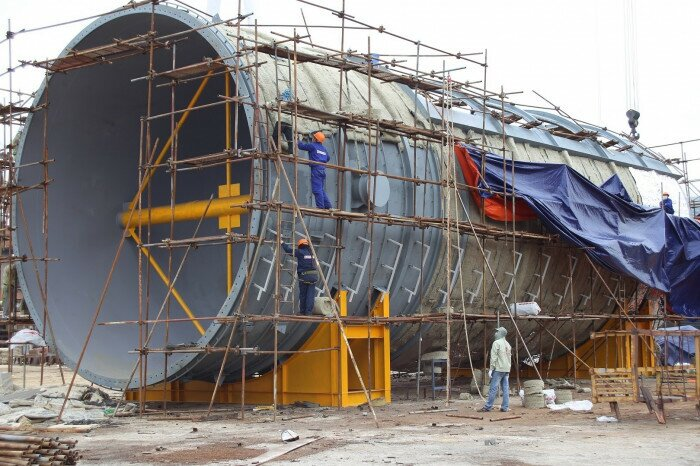The maritime industry strives for green transformation
05/06/2023
Maersk Corporation has launched a greening strategy by replacing traditional train fuel with synthetic methanol fuel.
The world’s largest shipping group Maersk is investing in a fleet of container ships that are powered not by fossil fuels as usual but by synthetic methanol. However, this seemingly green strategy of the shipping industry is controversial.
At the port of Rotterdam, the busiest port in Europe, the container ship Mary Maersk of the Maersk shipping group is about to transport 18,000 containers of goods to Shanghai, Tangiers, and South Korea. The ship will be at sea for 6 weeks. Like most container ships, the Mary Maersk runs on fossil fuels.
The shipping industry emits about 3% of the greenhouse gas emissions of global emissions each year – roughly equal to the total emissions of the whole of Japan in 2021. So Maersk, the world’s leading shipping corporation, has come up with a greening strategy by replacing traditional train fuel with synthetic methanol.
Mr. Morten Bo Christensen, Head of Energy Transformation at Maersk, said: “Global businesses are working towards a transition to environmentally friendly modes of operation – production. see great value in buying green products, and reducing emissions to the environment.
Maersk’s approximately 200 chartering partners for freight transport are also pioneers in green transformation. In the fashion industry there is H&M, in the automotive industry there is Volvo, in the electronics industry there is Lenovo. However, Maersk’s strategy is still controversial because the cost and process of creating green methanol fuel are neither simple nor cheap. Worldwide, there are currently only about 80 factories producing this type of fuel.
Mr. Tristan Smith, a Professor at the UCL Institute of Energy, said: “The process of creating methanol fuel is not simple to be both efficient and low-cost. There is another cheaper option than using fuel from ammonia, but certainly, It will take a long time for ships to use this fuel.”
The question is: Who will ultimately pay the cost of building up so that shipping ships can run on green fuel? Most likely it will be the consumers who buy the products carried in those containers. For consumers in advanced economies, a few dollars more may not have a big impact, but for developing countries, it’s a big deal.
But reducing greenhouse gas emissions, and neutralizing carbon is a big goal of the world shipping industry. For example, the Panama Canal is adopting a toll system – ships with fewer emissions passing through the canal will have to pay lower fees. Therefore, investing in green fuel is still considered to bring great value. Especially when shipping towards zero carbon emissions.
Source: VTV.vn
Must Read
You may be interested in


Priority is given to investing in 29 seaport projects with a total capital of over 31 trillion Vietnamese Dong sourced from the state budget

Ba Ria – Vung Tau to become national marine economic hub

Improving the capacity of shipbuilding enterprises, catching the wave of opportunities

Completing negotiations and signing power purchase agreements with 40/40 transitional renewable energy investors

Vietnam expected to emerge as a prominent logistics player in Asia

Freight transportation from Ho Chi Minh City port to Barion Head port

Ho Chi Minh City orients to develop Can Gio “superport”

The maritime industry strives for green transformation








